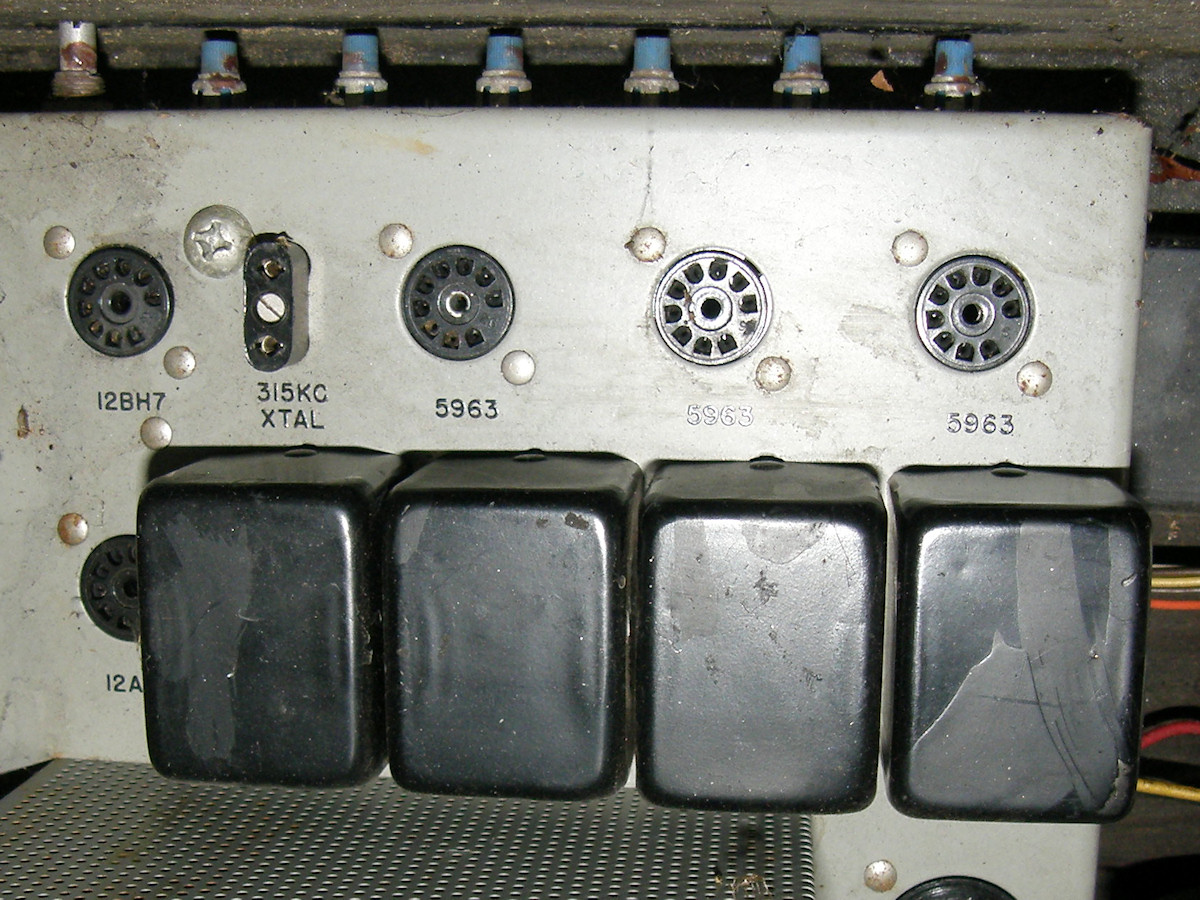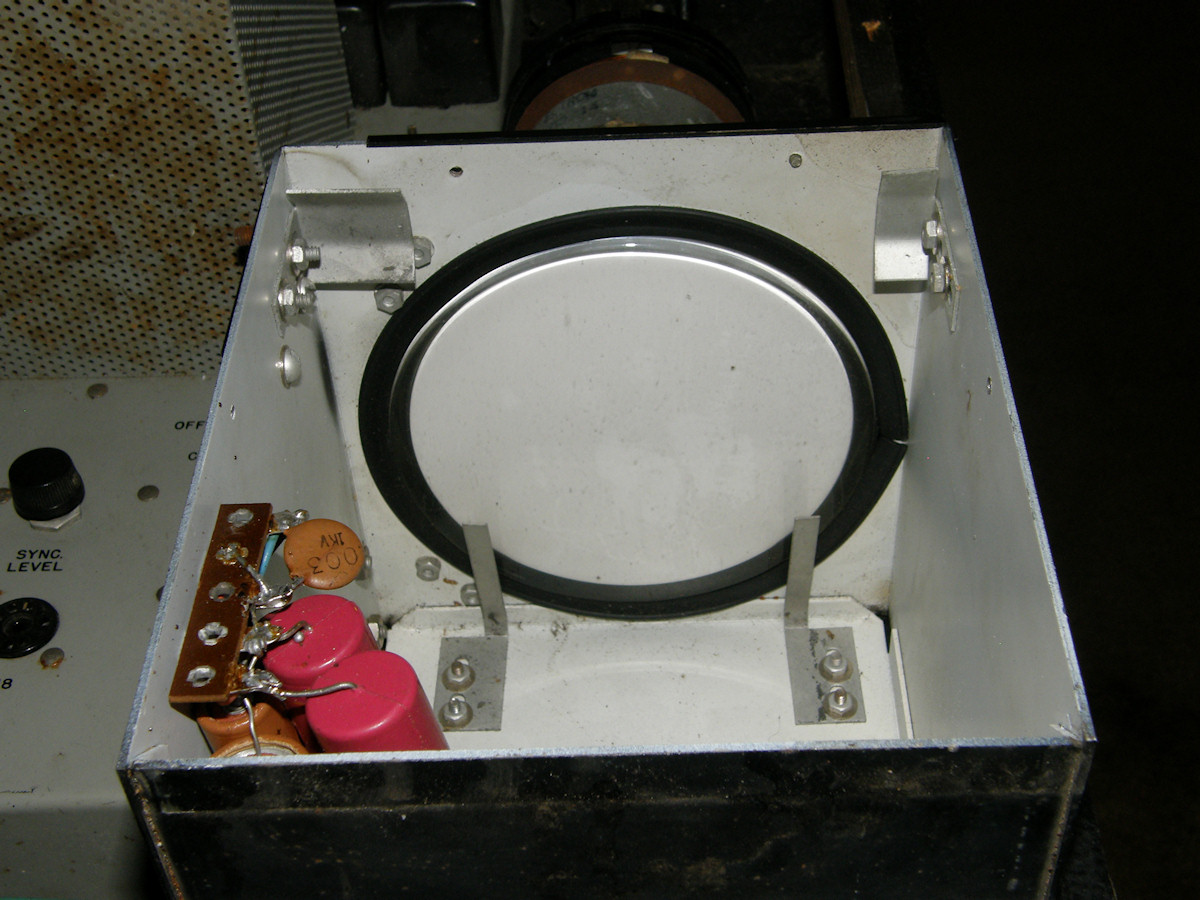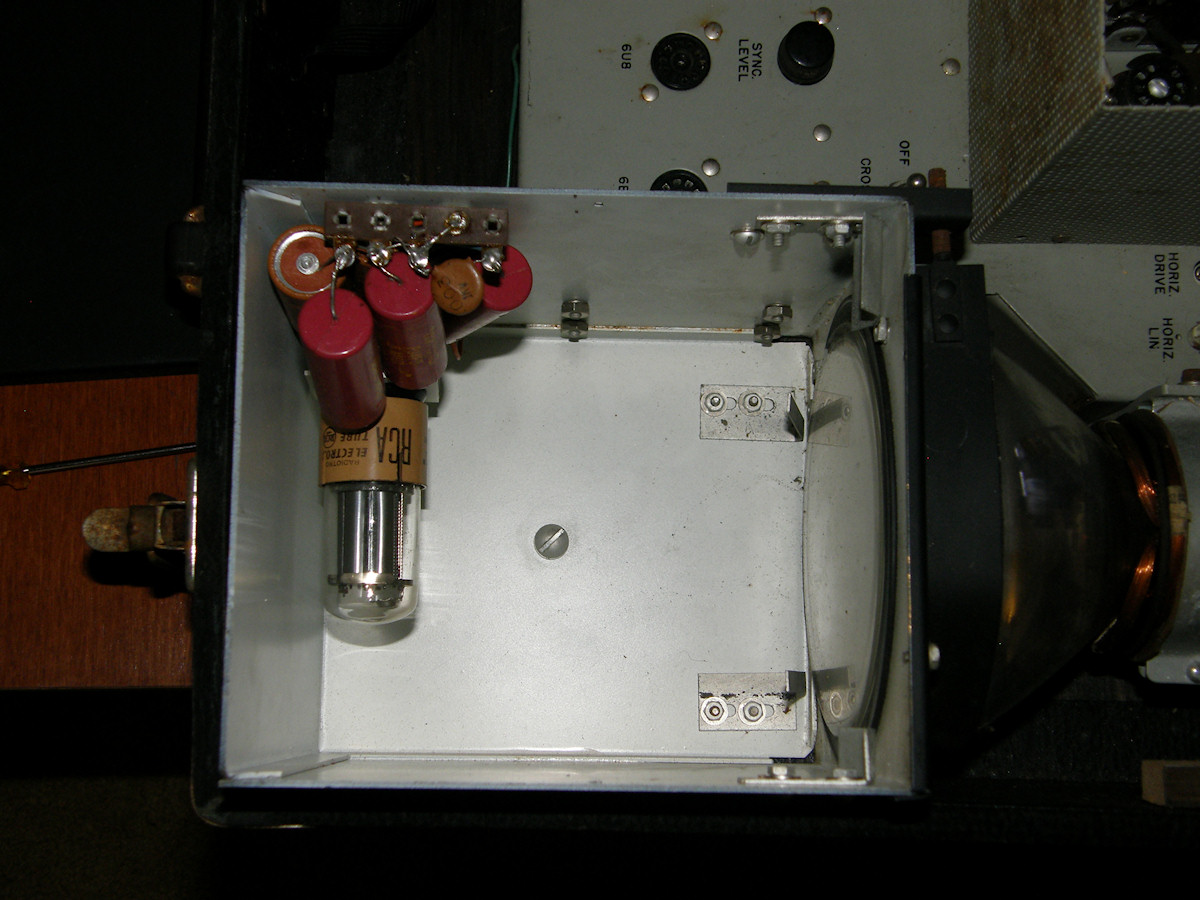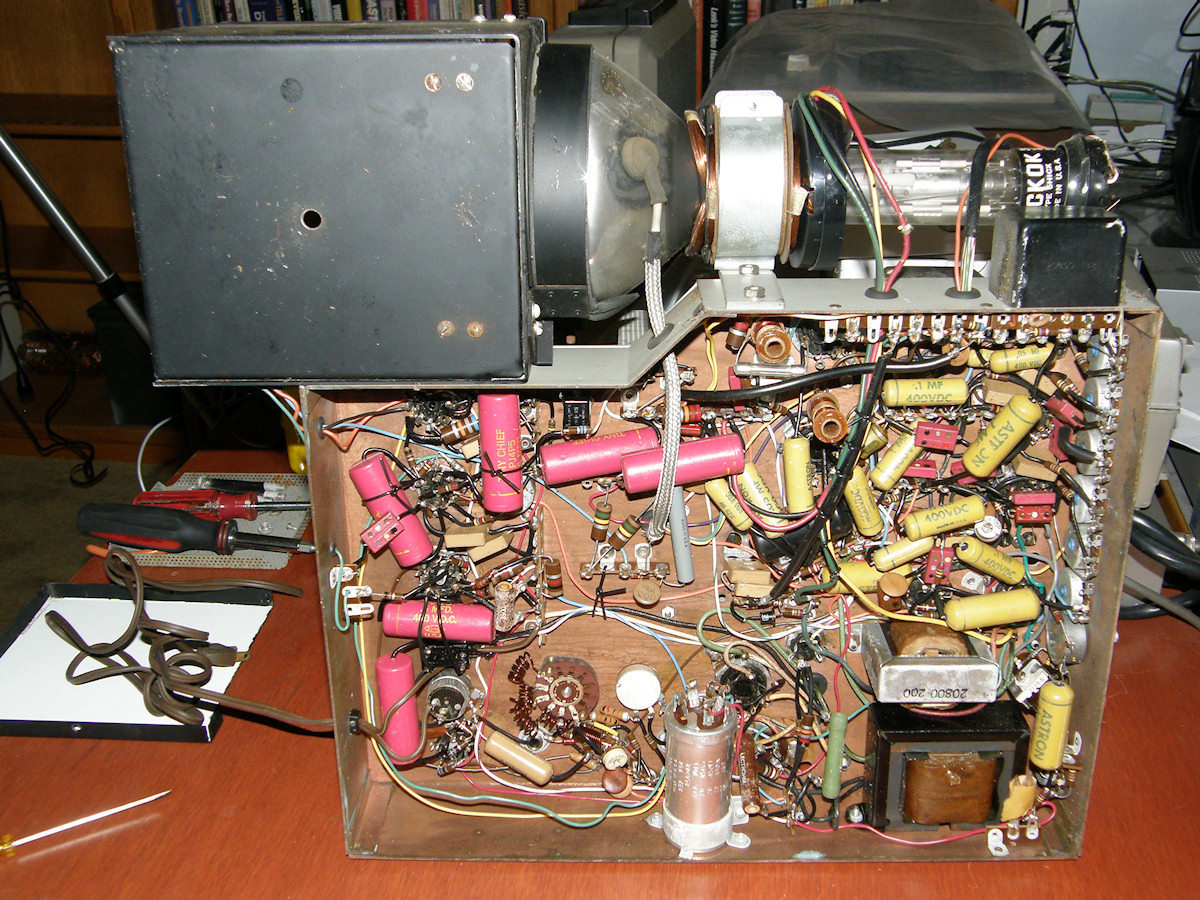|
LabGuy's World: Hikock 760 Video Scanner
Hikock 760 Video Scanner - 20141108 PROJECT GOAL: Restore this unit to operation. This unit is so rare, the only info about the Hikock 760 I found was the service manual. Thank goodness. Copyright 1957. It's the same age as me! Now that is antique. 
Top view. Cables, probes, tubes and 31.5KHz crystal are missing. 
EIA 2:1 interlace sync generator and cross hatch generator. Almost digital! 
Face of the UV phosphor scanning CRT. A transparent slide is placed here 
931A photomuliplier tube picks up the transmitted light and makes video 
Overall condition is around 88%. Low rust. Pretty clean. Though wood case is rotted. (not shown) 
Spaghetti schematic of the circa 1957 Hikock 760 Video Scanner This unit is very similar to the [B&K Television Analyst Model 1077B]. It produces a video signal by scanning a slide with the light of a blank raster from an ultraviolet phosphor CRT. UV phosphor has two advantages in this case. One, the RCA 931A photomultiplier tube is most sensitive to UV light. Second, the UV phosphor has extremely short persistance. This translates into higher image resolution than can be produced by slower phosphors. 
EXAMPLE: B&K Precision 1077B Video Scanner / TV analyzer scanning a slide As the electron beam sweeps over the phosphor, it produces a moving spot of light. This spot of light always has a certain amount of comet tail because of phosphor persistence. The ability to keep glowing for a period of time after electron excitation is removed. Ideally, we would step the spot from point to point and sample the light level. In this way, every light sample would be an accurate representation of the level at that particular pixel. Unfortunately, this device is pre-digital. The spot on this tube is continuous motion, with trailing afterglow. The comet tail causes a softening to outright blurring effect in the video. Somewhere in the video amplifer circuit, we are certain to find an equilization network that compensate for some of this distortion. This project will most likely be another precursor on the path to builidng my own color flying spot scanner. Coming soon. Stay tuned. [HOME] [ELECTRONICS PROJECTS] Created: November 8, 2014 Last updated: November 8, 2014 |